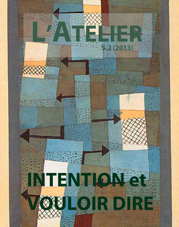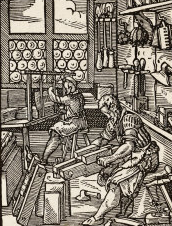La question « pourquoi ? » ou l'impossible récit dans American Pastoral de Philip Roth
Keywords:
Philip Roth, interprétation, intention, vouloir-direAbstract
American Pastoral est un roman qui interroge le lecteur par bien des aspects. La question de la voix narrative est la première difficulté. Le narrateur, Nathan Zuckerman est également un auteur. Son sujet est un personnage de son enfance, Seymour Levov. Les voix de Nathan Zuckerman et de Seymour Levov se mêlent au sein du roman autour d'une même question : pourquoi Merry Levov, la fille de Seymour, est-elle devenue une terroriste ? Pour le lecteur, le récit apparaît comme une tentative de répondre à cette question. Mais au fil de la lecture, il devient clair que tel n'est pas le cas. Au contraire, c'est la validité de cette question même qui est interrogée et à travers elle toute la question du sens et de l'intention d'un vouloir-dire.
After reading American Pastoral, the reader is left with many questions. The main problem is the narrative voice. Nathan Zuckerman, the narrator is also an author. He is inspired by a character he remembers from his childhood, Seymour Levov. Nathan Zuckerman's and Seymour Levov's voices become intertwined asking the same question: why did Merry Levov — Seymour's daughter — become a terrorist? For the reader it seems at first that the novel has been written to answer this question. But as the novel progresses, it appears to be quite the opposite. It is the relevance of this question about Merry Levov's destiny which is at stake in American Pastoral. In what way does this fact renew our perception of the notions of intention and meaning?
Published
Issue
Section
License
- Work submitted for publication must be original, previously unpublished, and not under consideration for publication elsewhere. If previously published figures, tables, or parts of text are to be included, the copyright-holder's permission must have been obtained prior to submission.
- Authors of accepted manuscripts will assign to L'Atelier the right to electronically distribute their article, or publish it in any form (Internet, CD ROM, printed copy) but authors will retain copyright and, after the article has appeared in L'Atelier, authors may republish their text (in print and/or electronic form) as long as they clearly acknowledge L'Atelier as the original publisher.


